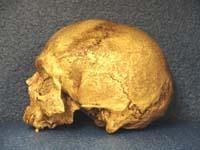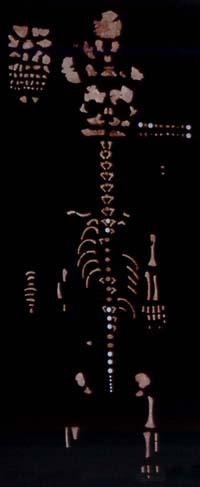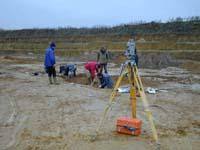The encounter between the men of Neanderthal and Cro-Magnon
2006/12/10 Galarraga Aiestaran, Ana - Elhuyar Zientzia

It is difficult to maintain this hypothesis, the data that have been found so far are not enough to confirm this idea. Yes, scientists know that the men of Neanderthal and Cro-Magnon lived in the same era in the same territory for thousands of years.
In fact, up to 50,000 years ago the Neanderthal man was alone in all Europe, but 20,000 years later most Europeans belonged to the lineage of the Cro-Magnon man. What happened during that time?
Some believe that although they lived in similar territories, they did not find themselves, they did not occupy the same place of residence at the same time. Others believe that yes, they met. They are even believed to have made efforts to gather and reproduce.
In this case, there are three options. The first, that the hybrid assumption is not viable; the second, that the hybrid is sterile despite its survival and, finally, that the hybrid is fruitful. If this were true, the Neanderthal man would have participated in the evolution of the current human being.
Based on fossils

This is the most complete skeleton of a Neanderthal man who has been found. It belongs to a newborn. (Photo: B. B. Maureille/Nature)
Some archaeologists believe in this third option and claim to have evidence (few). One of them is the skeleton discovered in December 1998 in the Portuguese valley of Lapedo. It is the skeleton of a four-year-old boy who, according to the researchers studied, presents in confusion physical characteristics of the men of Neanderthal and Cro-Magnon. For example, femur and lukewarm are like that of the Neanderthal man, while the jaw and teeth are similar to those of today.
It is estimated that the child of Lapedo would live about 24,500 years ago and the man of Neanderthal disappeared 3,000 years ago.
They have now announced that, in addition to the child of Lapedo, some bones found more than 50 years ago in Romania have their characteristics. It is a skull, a jaw and an omoplato that, after being reconsidered, consider that they belong to a hybrid between the men of Neanderthal and Cro-Magnon.
It seems that, like the modern man, he had a narrow nose and a small forehead, but the back of the skull and jaw are similar to that of the Neanderthal man. It is estimated that the footprints date back to 30,000 years, when the men of Neanderthal and Cro-Magnon lived together.
Genetic study

There are many questions to answer and archaeologists continue to seek. (Photo: Albertkanaal)
In any case, these tests are weak, since very few clues have been found and it is possible that they are simply human bones that had some anomaly. However, they do not rule out this possibility and genetic studies have been conducted to detect their possible existence.
In May of this year the DNA sequence of a Neanderthal man of 45,000 years ago has been published. Specifically, they have sequenced a small part of the genome (0.03% of the genome), but have come to the conclusion that the chromosome Y of the human being is very different from that of the current man, moreover, there is a greater difference between both chromosomes Y than in other chromosomes. Therefore, researchers believe that both species were not mixed.
However, archaeologists will continue to seek because there are still many questions to answer.
Published in 7K.



